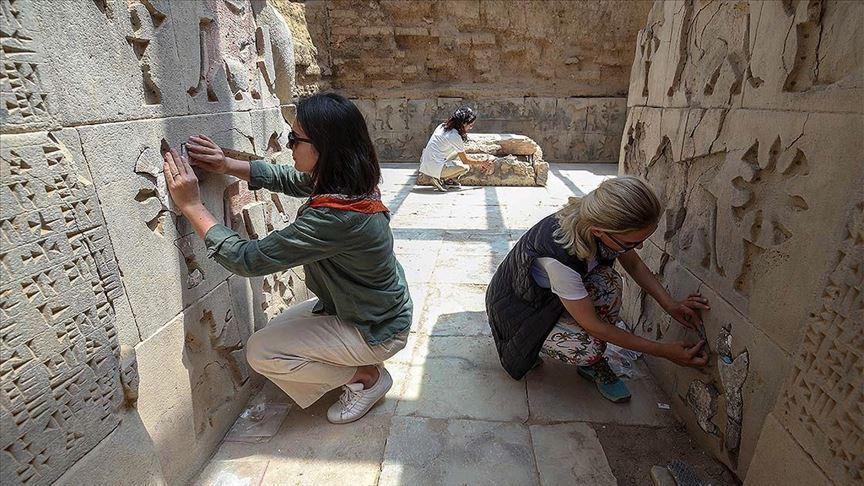
After more than three decades of painstaking work, archaeologists in Eastern Anatolia are nearing their goal: turning a 2,700-year-old Urartian castle into an open-air museum.
“We plan to create an open-air museum that protects the entire temple area around a roof, shares the sacred values of the Urartians and reflects their culture,” Mehmet Işıklı, an archaeology professor at Erzurum’s Atatürk University, recently told Anadolu Agency.
Işıklı is overseeing a team of 30 experts who are restoring stone carvings in the Ayanis Castle, which is located on a hill overlooking Lake Van.
Ayanis, which was built by Urartian King Rusa II, is one of the civilization’s most magnificent structures thanks to its mudbrick walls and stone engravings.
Işıklı said they were carrying out important work to shed light on the castle. “We are doing excavation work in a very restricted area.”
“Our target is the Haldi Temple, which is the most important part of the castle, and the building complexes associated with it,” he said.
The core temple, which was one of the holiest places for the Urartians, remains intact, as do the area’s podium hall and extraordinary stonework, the scholar said.
The excavation team is placing the engraved stones in their original place in the Haldi Temple.
“Especially in the temple, there are walls decorated with ornaments defined as intaglio made with stone carvings that are unique in the world,” he said, referring to a technique specific to the site.
“There is alabaster decorated with extraordinary workmanship,” he said. “We had to do very serious stone restoration in this area.”
Işıklı said they aimed at creating a whole with original parts.
Ayşegül Akın Aras, a research assistant at the Archaeology Department of Atatürk University, said that they were working meticulously to place the original intaglio on the walls of the temple.
“The Urartians carved the stone blocks and created different ornaments in line with their religious customs,” she said.
“We’re placing the engraved original pieces on these carved stones. Once the original stones are found, the temple will serve tourism in all its glory,” she added.